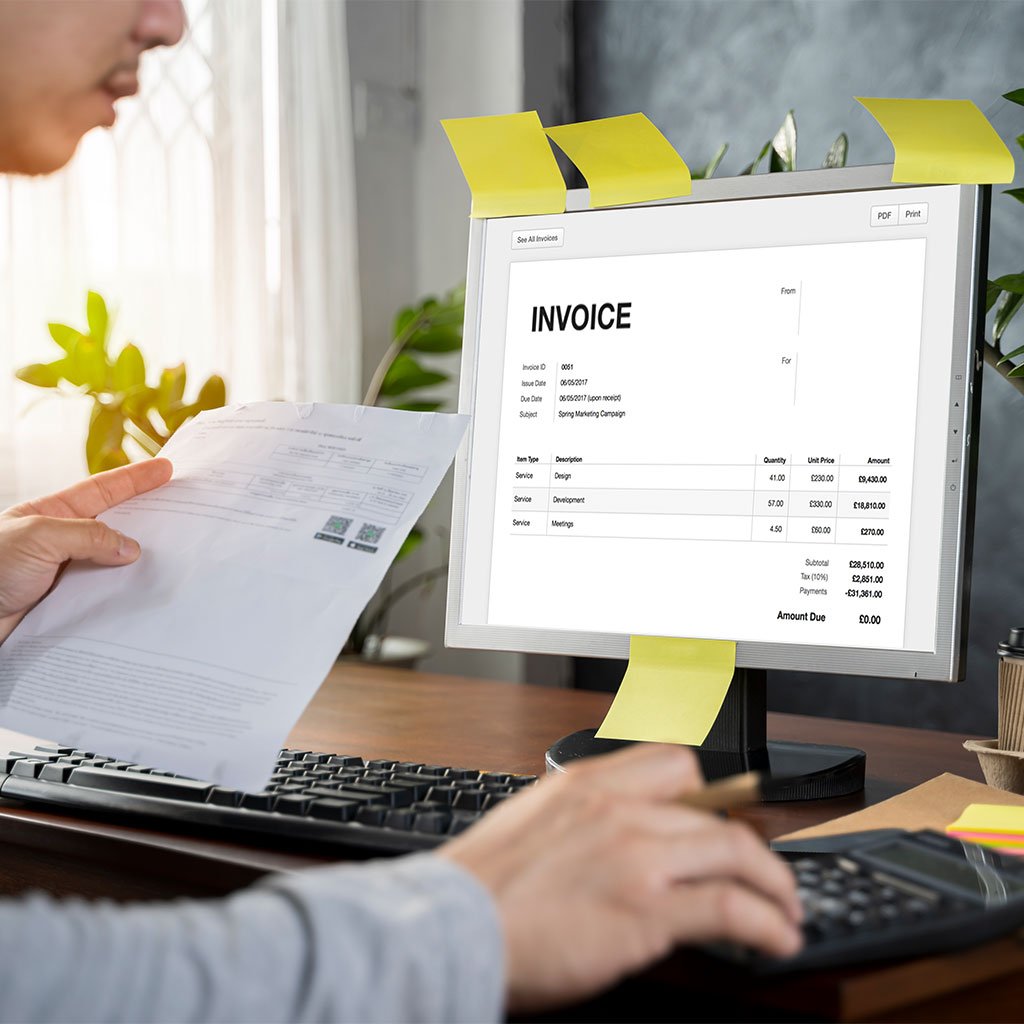Expert AR Management
Optimize Cash Flow with Seamless Receivable Management Services
Receivable management services are essential for businesses looking to maintain steady cash flow and reduce the risk of overdue payments. By outsourcing receivable management, companies can focus on growth while ensuring that customer payments are collected on time.



Loved by thousands
- Home
- Efficient Receivable Management Services for Growth

Table of Contents
- What Are Receivable Management Services?
- Key Benefits of Receivable Management Services
- Features to Look For in Receivable Management Services
- Best Practices for Improving Receivables Management
- Conclusion
What Are Receivable Management Services?
Receivable management services involve organizing, tracking, and collecting customer payments. These services ensure that businesses receive payments within agreed terms, reducing the likelihood of bad debts and improving cash flow. By leveraging tools and strategies, receivable management services help businesses maintain financial stability while fostering positive customer relationships. Learn more about accounts receivable management to see how it supports business growth.
Key Benefits of Receivable Management Services
Effective receivable management services offer several important advantages, such as:
- Improved Cash Flow: By reducing the time it takes to collect payments, receivable management services help businesses maintain steady cash flow and avoid cash shortages.
- Lowered Risk of Bad Debt: Tracking and following up on unpaid invoices reduces the risk of payments becoming overdue or uncollectible.
- Reduced Administrative Work: Outsourcing receivable management frees up time for internal teams, allowing them to focus on core business activities.
Features to Look For in Receivable Management Services
When selecting receivable management services, consider the following features to ensure efficient and reliable collections:
- Automated Invoicing: Automation simplifies invoicing, ensuring timely delivery and reducing the chance of errors.
- Payment Reminders and Follow-ups: Regular reminders help prompt timely payments and keep customer accounts current.
- Real-Time Tracking and Reporting: With real-time tracking, businesses can monitor invoice status, payment history, and customer balances for a clear view of cash flow.
Best Practices for Improving Receivables Management
Implementing best practices can enhance the effectiveness of receivable management. Here are some essential tips:
- Set Clear Payment Terms: Establish clear terms with customers upfront to avoid misunderstandings about payment timelines and conditions.
- Follow Up Promptly: Following up on overdue invoices promptly can reduce the risk of non-payment and improve collection times.
- Utilize Payment Automation: Automated payment reminders and online payment options make it easier for customers to pay, reducing delays.
Conclusion
Receivable management services play a vital role in helping businesses maintain strong cash flow, minimize late payments, and reduce the risk of bad debts. By outsourcing receivables management, companies can ensure timely collections, accurate financial records, and improved relationships with customers. For businesses seeking reliable and efficient collections, receivable management services offer a strategic solution to support financial stability and growth.
SERVICES
Our Range of Accounts Receivable Management
Discover our expert invoicing management services designed to streamline invoicing, optimize payments, and enhance your business's cash flow management.
01
Invoice Generation and Tracking
Create and send invoices efficiently, track their status, and ensure timely payments from clients, streamlining your cash flow.
02
Customer Payment Processing
Manage and record customer payments, apply them to respective invoices, and keep your accounts receivable accurate and up-to-date.
03
AR Aging Reports Analysis
Generate detailed AR aging reports to analyze overdue invoices, helping you to identify and address potential payment issues promptly.
04
Payment Reminder Services
Send automated or manual payment reminders to customers, reducing the number of overdue invoices and improving cash collection.
05
Dispute Resolution Assistance
Assist in resolving any disputes related to invoices, ensuring smooth communication with customers and maintaining positive relationships.
06
Credit Management Solutions
Evaluate customer creditworthiness, set credit limits, and manage credit policies to minimize risks and improve financial stability.
Cash Flow Efficiency
Maximize Cash Flow, Minimize Hassles
Gain actionable insights through data analysis, empowering informed decisions for strategic payroll management.

What are Invoices?
An invoice is a document that lists the products or services provided by a seller to a buyer along with the agreed-upon prices and terms of payment. It is a request for payment and serves as evidence of a transaction between the buyer and the seller. Invoices may include information such as the date of the transaction, the quantity of goods or services provided, the unit price, and any taxes or discounts applied.
What is invoicing management
Invoicing management is a way of organizing and keeping track of invoices, which are bills sent to customers for products or services they buy. The process starts with making clear invoices that list the items bought, the amounts, and the total cost. After the invoice is sent, invoicing management checks to see if the customer has received and paid it. If a payment is late, a reminder can be sent. Good invoicing management helps a business get paid on time, keep accurate records, and avoid missed payments. Many businesses use software to make invoicing easier and reduce mistakes.
What about Credit Memos?
Invoices and credit memos are both types of documents that are used in financial transactions. However, they serve different purposes.
An invoice is a document that outlines the details of a sale or service that has been provided by a seller to a buyer. It includes the quantity, description, and price of the goods or services provided, along with any taxes or fees that apply. The invoice serves as a request for payment and is usually sent by the seller to the buyer.
On the other hand, a credit memo is a document that is used to adjust an invoice or a bill. It is issued by the seller to the buyer and indicates that the buyer is owed a credit for a particular amount. This could be due to a variety of reasons such as a return of goods or an overpayment.
In other words, invoices are used to request payment for goods or services provided while credit memos are used to adjust previously issued invoices or bills.
It’s important to note that invoices and credit memos are related to each other. When a credit memo is issued, it reduces the amount owed by the buyer on the related invoice. The net amount owed by the buyer is the difference between the invoice amount and the credit memo amount.
What is Accounts Receivable Management?
Accounts receivable management, on the other hand, is the process of tracking and collecting payments owed to a business by its customers. It involves managing the invoices issued by the business, monitoring the payment terms and due dates, and following up with customers who have not paid their bills on time.
Effective accounts receivable management is essential for maintaining a healthy cash flow for a business. It involves setting credit policies and payment terms, sending timely invoices, monitoring payment receipts, and following up with customers who are late in paying their bills. It may also involve negotiating payment plans or settlements with customers who are experiencing financial difficulties.
By managing accounts receivable effectively, a business can improve its cash flow, reduce bad debts, and maintain positive relationships with its customers.
Here are some key steps to managing accounts receivable effectively:
- Track invoices and payment due dates: It’s important to have a system in place for tracking invoices and payment due dates, so that you can follow up on overdue payments in a timely manner. This can be done manually using a spreadsheet or invoicing software, or by using a specialized accounts receivable management system. These systems can generate very useful reports like the A/R Aging Report to keep track of outstanding invoices.
- Set clear payment terms: Make sure that your payment terms are clearly stated on invoices and contracts, and that they are communicated to customers in advance. This will help to ensure that there is no confusion about when payment is due, and will reduce the risk of overdue payments.
- Follow up on overdue payments: If a payment is overdue, it’s important to follow up as soon as possible. This can be done through a variety of methods, such as email, phone, or snail mail. Be sure to keep a record of all communication with customers, as this can be useful in the event that legal action is necessary.
- Offer multiple payment options: To make it easier for customers to pay their invoices, consider offering multiple payment options. This can include credit card payments, online payments, and even the option to set up automatic payments.
- Use accounts receivable financing: If your business is experiencing cash flow issues due to overdue accounts receivable, you may want to consider using accounts receivable financing. This is a type of financing in which a lender provides the business with a cash advance based on its accounts receivable. The lender then collects the money owed to the business from the customer directly.
- Implement a credit approval process: To reduce the risk of default, it’s a good idea to implement a credit approval process for new customers. This can include checking a customer’s credit score and financial history, as well as requiring a deposit or other form of collateral.
- Review and adjust credit limits: To further reduce the risk of default, it’s important to regularly review and adjust credit limits for customers. If a customer’s creditworthiness changes, or if they have a history of overdue payments, it may be necessary to lower their credit limit or require them to pay in advance.
Conclusion
Accounts receivable management is a critical aspect of financial management for any business. By tracking invoices and payment due dates, setting clear payment terms, following up on overdue payments, offering multiple payment options, and implementing a credit approval process, businesses can improve their cash flow, reduce the risk of default, and increase the efficiency of their billing and collections processes.
Help Center
FAQs about Accounts Receivable Management
Get quick answers to questions you may have before hiring us for Accounts Receivable Management Services
Our Accounts Receivable Management services include invoice generation, payment processing, aging reports, payment reminders, dispute resolution, and credit management.
By ensuring timely invoicing and payments, reducing overdue invoices, and managing customer credit, we help maintain a steady cash flow.
Yes, we tailor our invoicing solutions to meet your specific business needs, ensuring accuracy and efficiency in every transaction.
We provide aging reports, send payment reminders, and assist in resolving disputes to ensure overdue payments are addressed promptly.
Absolutely, we evaluate customer creditworthiness, set appropriate credit limits, and manage credit policies to minimize financial risks.
Connect with us
Join 1000s of Businesses who Trust Maxim Liberty with their Books!
Try our award winning services with no risk. We have an unconditional money back guarantee on your 1st payment. Just 5 minutes of your time over the phone, can get you started with the best Bookkeeping service in USA while saving you hundreds of dollars.






